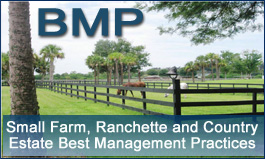Cooperating Agencies
Find It
- Meeting Agendas and Minutes
- 2024/2025 Meeting Schedule
- District Location and Boundaries
- Services Provided
- Activities/Education
- Cooperating Agencies
- Best Management Practices
- References
- Agency Partnership Updates
District History and Origin
 The Indian River Soil and Water Conservation District (SWCD) was organized in 1945 with boundaries the same as Indian River County. It is a governmental subdivision of the state of Florida, known as an Independent Special District. Creation of the Indian River SWCD is authorized by the Soil and Water Conservation Law, Chapter 582, enacted by the State legislature in 1937.
The Indian River Soil and Water Conservation District (SWCD) was organized in 1945 with boundaries the same as Indian River County. It is a governmental subdivision of the state of Florida, known as an Independent Special District. Creation of the Indian River SWCD is authorized by the Soil and Water Conservation Law, Chapter 582, enacted by the State legislature in 1937.
The mission of the Indian River SWCD is to deliver natural resources conservation technology and education to local land users and to promote the best land use and management practices that will conserve, improve and sustain the natural environment of Indian River County.
Nearly two-thirds of the total land area of the district is west of I-95, however, more than 90% of the population resides in the eastern third of the county. According to the University of Florida Bureau of Economic and Business, as of 2000 the population of Indian River County 113,000. The unincorporated area has a population of 67,146, while of the municipalities Vero Beach has the largest population, 17,745, Sebastian-15,115 and Fellsmere-2,468, and finally, the smallest municipalities, Indian River Shores and the Town of Orchid, make up the balance of the population.
The land along the western boundary of the county is used primarily for range and pastureland with little residential development. To the east of that area is the St. Johns Marsh, a large freshwater marsh extending the entire length of the county. Included in this significant wetland is the 6,000 acre Blue Cypress Lake. And the land between the marsh and I-95 is devoted primarily to agriculture. Much of this land is drained marshland now used for citrus or pasture.
The 1997 U.S. Census of Agriculture states that there are 437 farms in Indian River County with an estimated market value per farm of $1,243,117. There are 85,820 acres of cropland, including 7 farms with 1,050 acres of vegetables. Citrus is the major crop in the district with 343 farms having a total of 72,971 in production. Alfalfa, wild hay and silage are produced on 6 farms with a total of 511 acres. There are 63 farms with a total inventory of 19,197 cattle and calves, and 5 farms with 292 poultry(layers and pullets).
